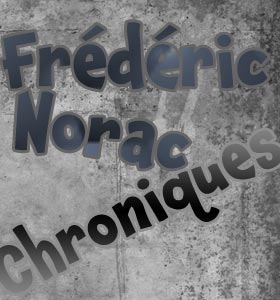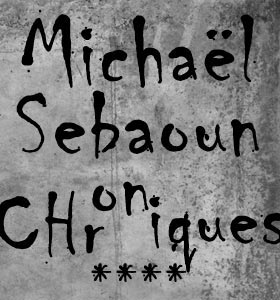Virelai
Nom d'une forme poétique de la fin du xiiie siècle et du xive siècle, qui disparaît au xve siècle. Dans sa forme la plus simple, le virelai se compose d'une strophe rimée de deux vers, suivie d'une strophe refrain ou formule répétitive musicale (avec des paroles différentes), propre à la reprise en chœur.
Tel que :
B : couplet
B' : couplet
B'' : couplet
A : refrain
etc.
Plus complexe, il mêle des strophes de différentes métriques, le refrain pouvant alors changer, mais par exemple avoir un mètre (en général court) et une assonance particuliers, comme une réponse régulière obstinée. Il peut aussi débuter comme un rondeau, une strophe et une formule refrain qui est reprise à distance régulière (tous les huit vers, toutes les deux ou trois strophes).
Guillaume de Machaut, virrelai Comment qu'à moy lonteinne, par Marc Mauillon, Angelique Mauillon, Vivabiancaluna Biffi, Pierre Hamon.Guillaume de Machaut (1300-1377) a écrit 33 virelais sous le terme de chansons Baladées.
Le mot lui-même vient du mot virer (tourner), et peut évoquer le retour obstiné des formules ou la danse.
Quant je sui mis au retour
virelai de Guillaume de Machaut
Guillaume de Machaud, Quant je sui mis au retour, ensemble Elthin : Dáša Bejčková, Honza Pouska, Vladimír Švígler, Petra Kristová, Ivana JustovQuant je sui mis au retour de veoir ma Dame,
Il n'est peinne ne dolour que j'aie, par m'ame.
Dieus! c'est drois que je l'aim, sans blame de loial amourSa biauté, sa grant doucour d'amoureuse flame,
Par souvenir, nuit et jour m'espient et enflame
Dieus! c'est drois que je l'aim, sans blame de loial amourEt quant sa haute valour mon fin cuer entame,
Servir la weil sans fotour penser ne diffame.
Dieus! c'est drois que je l'aim, sans blame de loial amour
Je chante par couverture
virelai de Christine de Pisan
Je chante par couverture,
Mais mieux pleurassent mes oeils,
Ni nul ne sait le travail
Que mon pauvre coeur endure.Pour ce muce ma douleur,
Qu'en nul je ne vois pitié.
Plus a l'on cause de pleur,
Moins trouve l'on d'amitié.Pour ce plainte ni murmure
Ne fais de mon piteux deuil.
Ainçois ris quand pleurer veuil,
Et sans rime et sans mesure
Je chante par couverture.Petit porte de valeur
De soi montrer déhaitié,
Ne le tiennent qu'à foleur
Ceux qui ont le coeur haitié.Si n'ai de démontrer cure
L'intention de mon veuil,
Ains, tout ainsi comme je seuil,
Pour celer ma peine obscure,
Je chante par couverture
Bibliographie
- APEL WILLI (éditeur), French secular compositions of the fourteenth century, I. Ascribed compositions. Dans « Corpus mensurabilis musicae » (53), American Instiute of Musicology, Roma 1970 [lxxv-239 p.]
- BERGNER HEINZ, Mittelenglische Lyrik und die Frage der Gattungen. Dans Spechtler Franz Viktor (éditeur), Lyrik des ausgehenden 14. und des 15. Jahrhunderts. Dans « Chloe : Beihefte zum Daphnis » (1) Amsterdam, Rodopi 1984, p. 45-66.
- BRUMANA BIANCAMARIA, CILIBERTI GALLIANO, Nuove fonti per lo studio dell'opera di Paolo da Firenze. Dans « Rivista Italiana di Musicologia » (XXII) 1987, p. 3-33.
- DEBSKA AGNIESZKA, Renesansowe tance dworskie : Uwagi historyczno-etymologiczne. Dans « Monochord : De musica acta, studia et commentarii » (10) 1996.
- DÖMLING WOLFGANG, Die mehrstimmigen Balladen, Rondeaux and Virelais von Guillaume de Machaut. Unter-suchungen zum musikalischen Satz (thèse). Universität München 1967 ; Dans « Münchner Veröffentlichungen zur Musikgeschi-chte » (16), Tutzing, Schneider 1969 [142 p.]
- EARP LAWRENCE M., Genre in the fourteenth-century French chanson : The virelai and the dance song. Dans « Musica disciplina » (45) 1991, p. 123-141.
- EGGEBRECHT HANS HEINRICH (éditeur), Handwörterbuch der musikalischen Terminologie (XIII). « Kommission für Musikwissen-schaft der Akademie der Wissenschaften und Literatur Mainz » Stuttgart, Steiner 1986.
- ESCOT POZZI, A view of global music theory. Dans «Sonus : A Journal of Investigations into Global Musical Possibilities » (17) 1997, p. 13-22.
- FALLOWS DAVID, The only firmly instrumental piece : A com-mentary on Benvenuto Disertori. Provincia Autonoma di Trento, Trento 1996, p. 81-92
- FORSCHER SUSAN H., Hugo and Arnold de Lantins and the Italo-Liègeois tradition (thèse). Smith College 1967.
- FULLER SARAH, Machaut and the definition of musical space. Dans « Sonus : A Journal of Investigations into Global Musical Possibilities » (12) 1991, p. 16-31.
- GALLO F. ALBERTO (éditeur), Il codice musicale Panciatichi 26 della Biblioteca Nazionale di Firenze. Dans « Studi e testi per la storia della musica » (3) Firenze, Olschki 1981.
- GARGIULO PIERO, Landini e il cantar a la Francescha : Alcune note sul Virelai Adiu Adiu douce dame iolye. Dans Delfino Antonio (éditeur), Rosa-Barezzani Maria Teresa (éditrice), « Col dolce suon che da te piove : Studi su Francesco Landini e la musica del suo tempo - In memoria di Nino Pirrotta», La tradizione musicale (4), SISMEL-Edizioni del Galluzzo, Firenze 1999.
- GIEBER ROBERT L., Poetic elements of rhythm in the ballades, rondeaux and virelais of Guillaume de Machaut. Dans « Romanic Review (LXXIII / 1) janvier 1982.
- GÖLLNER MARIE LOUISE, Musical and poetic structure in the refrain forms of Machaut. Dans Just Martin (éditeur), Wiesend Reinhard (éditeur), «Liedstudien : Wolfgang Osthoff zum 60. Geburtstag», Tutzing, Schneider 1989, p. 61-76.
- GOZZ, MARCO, Un nuovo frammento trentino di polifonia del primo quattrocento. Dans « Studi Musicali » (21) 1992, p. 237-251.
- GREENE GORDON K., SCULLY TERENCE (éditeurs), French secular music : Virelais. « Polyphonic music of the four-teenth century », Monte-Carlo, Oiseau-Lyre 1987
- GREENE GORDON K., The secular music of Chantilly Manus-cript, Musée Condé 564 (olim 1047) (thèse). Indiana University 1971.
- HARDEN BETTIE JEAN, Sharps, flats, and scribes : musica ficta in the Machaut manuscripts (thèse). Cornell University, 1983 [2v.]
- HEHRER KAREN FOX, A history of the virelai from its origin to the mid-fifteenth century (thèse). Ohio State University 1975
- HUSEBY GERARDO, Musical analysis and poetic structure in the Cantigas de Santa Maria. Hispanic Seminary of Medieval Studies, Madison (Wis.) 1983, p. 81-101.
- JEFFERY PETER, A four-part In seculum hocket and a mensural sequence in an unknown fragment. Dans « Journal of the American Musicological Society » (XXXVII / 1), 1984, p. 1-48.
- LEECH-WILKINSON DANIEL, The Cyprus songs. Dans Günther ursula (éditrice), Finscher Ludwig (éditeur), The Cypriot-French repertory of the manuscript Torino J.II.9 (préfaces de Chris-tophides Christophoros, Ataliotis Andreas, Katsouris Yiannis). « Musicological studies and documents » (45), American Institute of Musicology, Hänssler, Neuhausen-Stuttgart 1995, p. 395-431.
- LEECH-WILKINSON DANIEL, The well-formed virelai. Dans Dal-la Vecchia Patrizia, Restani Donatella (éditrices), « Istituto di Paleografia Musicale. Trent'anni di ricerche musicologiche: Studi in onore di F. Alberto Gallo», Miscellanea musicologica (III : 2), Torre d'Orfeo, Roma 1996, p. 125-142.
- LEECH-WILKINSON, Daniel Not just a pretty tune : Structuring devices in four Machaut virelais. Dans « Sonus : A Journal of Investigations into Global Musical Possibilities » (12) 1991, p. 16-31.
- LESCUREL JEHAN DE, The works of Jehan de Lescurel. Dans « Corpus mensurabilis musicae » (30), American Institute of Musicology, Roma 1967 [vii-40 p.]
- LITTLE PATRICK, The poet and the duke. Dans « Early Music » (XI / 2) avril 1983, p. 217-220.
- MULLALLY ROBERT, Cançon de carole. Dans « Acta Musicolo-gica » (LVIII / 2) décembre 1986, p. 224-231.
- MULLALLY ROBERT, Johannes de Grocheo's musica vulgaris. Dans « Music & Letters » (79) 1998, p. 1-26.
- NEWES VIRGINIA ERVIN, Imitation in the ars nova and ars subtilior. Dans « Revue Belge de Musicologie » (31) 1977, p. 38-59.
- PACHOLCZYK JOZEF M., The relationship between the nawba of Morocco and the music of the troubadours and trouvères. Dans « The World of Music » (XXV / 2) 1983, p. 5-14.
- PERKIN, LEEMAN L., At the intersection of social history and musical style: The rondeaux and virelais of the manuscript Torino J.II.9. Dans Günther Ursula, Finscher Ludwig (éditeurs), The Cypriot-French repertory of the manuscript Torino J.II.9 (préfaces de Christophides Christophoros, Ataliotis Andreas, Katsouris Yiannis). « Musicological studies and documents » (45), American Institute of Musicology; Hänssler, Neuhausen-Stuttgart 1995.
- PLENCKERS LEO J, Les rapports entre le muwashshah algérien et le virelai du moyen âge. Institute for Modern Near East Stud, Amsterdam 1982, p. 91-111.
- RIMMER JOAN, Dance elements in trouvère repertory. Dans « Dan Studien zur Musikwissenschaft (SMW) » ( III / 2) 1985, p. 23-34.
- ROSA-BAREZZANI MARIA TERESA, Modale und tonale Kadenzen im weltlichen Repertoire von TuB. Günther Ursula (éditeur), Finscher Ludwig (éditeur), Dean Jeffrey J. (éditeur), «Modality in the music of the fourteenth and fifteenth centuries/ Modalität in der Musik des 14. und 15. Jahrhunderts», Musicological studies and documents (49), American Institute of Musicology, Hänssler, Neuhausen-Stuttgart 1996, p. 93-128.
- SCHÖPF MANFRED, Zur Strophenform einiger Carols. Dans « Anglia » (LXXXVII /3-4) 1969, p. 394-397.
- SLEIDERINK REMCO, Pykini's parrot: Music at the court of Brabant. Bibliotheca Regia Belgica, Bruxelles 1994, p. 358-391
- SPECHTLER FRANZ VIKTOR (éditeur), Lyrik des ausgehenden 14. und des 15. Jahrhunderts. Dans «Chloe : Beihefte zum Daphnis» (1) Amsterdam, Rodopi 1984.
- STAEHELIN MARTIN, Beschreibungen und Beispiele musikali-scher Formen in einem unbeachteten Traktat des frühen 15. Jahrhunderts. Dans « Archiv für Musikwissenschaft » (XXXI / 3) 1974, p. 237-242.
- TISCHLER HANS, ROSENBERG SAMUEL N., The monophonic songs in the Roman de Fauvel. University of Nebraska, Lincoln 1991.
- VÉBER GYULA, Überlegungen zum Ursprung der Zagal-Struktur. Dans « Studia Musicologica Academiae Scientiarum Hungaricae » (XXI) 1979, p. 267-276.
- WAGENAAR-NOLTHENIUS HELENE, Wat is een rondeel ? Dans « Tijdschrift van de Vereniging voor Nederlandse Muziekgeschie-denis » (XXI / 2) 1969-1967.
- WEBER-BOCKHOLDT PETRA, Beobachtungen zu den Virelais von Guillaume de Machaut. Dans « Archiv für Musikwissen-schaft » (49) 1992, p. 263-281.
- WELKER LORENZ, Soit tart tempre und seine Familie. Bären-reiter, Kassel 1998, p. 322-334
- WILKINS NIGEL (éditeur), One hundred ballades, rondeaux and virelais from the late Middle Ages. Cambridge, Cambridge University 1969.
- WILKINS NIGEL, The structure of ballades, rondeaux and virelais in Froissart and in Christine de Pisan. Dans « French Studies » (XXIII) 1969, p. 337-348.
- WULSTAN DAVID, The muwassah and zagal revisited. Dans « Journal of the American Oriental Society » (CII) avril-juin 1982, p. 247-264.
- YARRISON EILEEN ANNE, The Medieval suite for flute and piano by Katherine Hoover : An examination, analysis, and per-formance guide (thèse). University of Nebraska 1996.




 À propos - contact | S'abonner au bulletin | Biographies de musiciens | Encyclopédie musicale | Articles et études | La petite bibliothèque | Analyses musicales | Nouveaux livres | Nouveaux disques | Agenda | Petites annonces | Téléchargements | Presse internationale | Colloques & conférences | Collaborations éditoriales | Soutenir musicologie.org.
À propos - contact | S'abonner au bulletin | Biographies de musiciens | Encyclopédie musicale | Articles et études | La petite bibliothèque | Analyses musicales | Nouveaux livres | Nouveaux disques | Agenda | Petites annonces | Téléchargements | Presse internationale | Colloques & conférences | Collaborations éditoriales | Soutenir musicologie.org.
Musicologie.org, 56 rue de la Fédération, 93100 Montreuil, ☎ 06 06 61 73 41.
ISNN 2269-9910.
Dimanche 13 Avril, 2025

